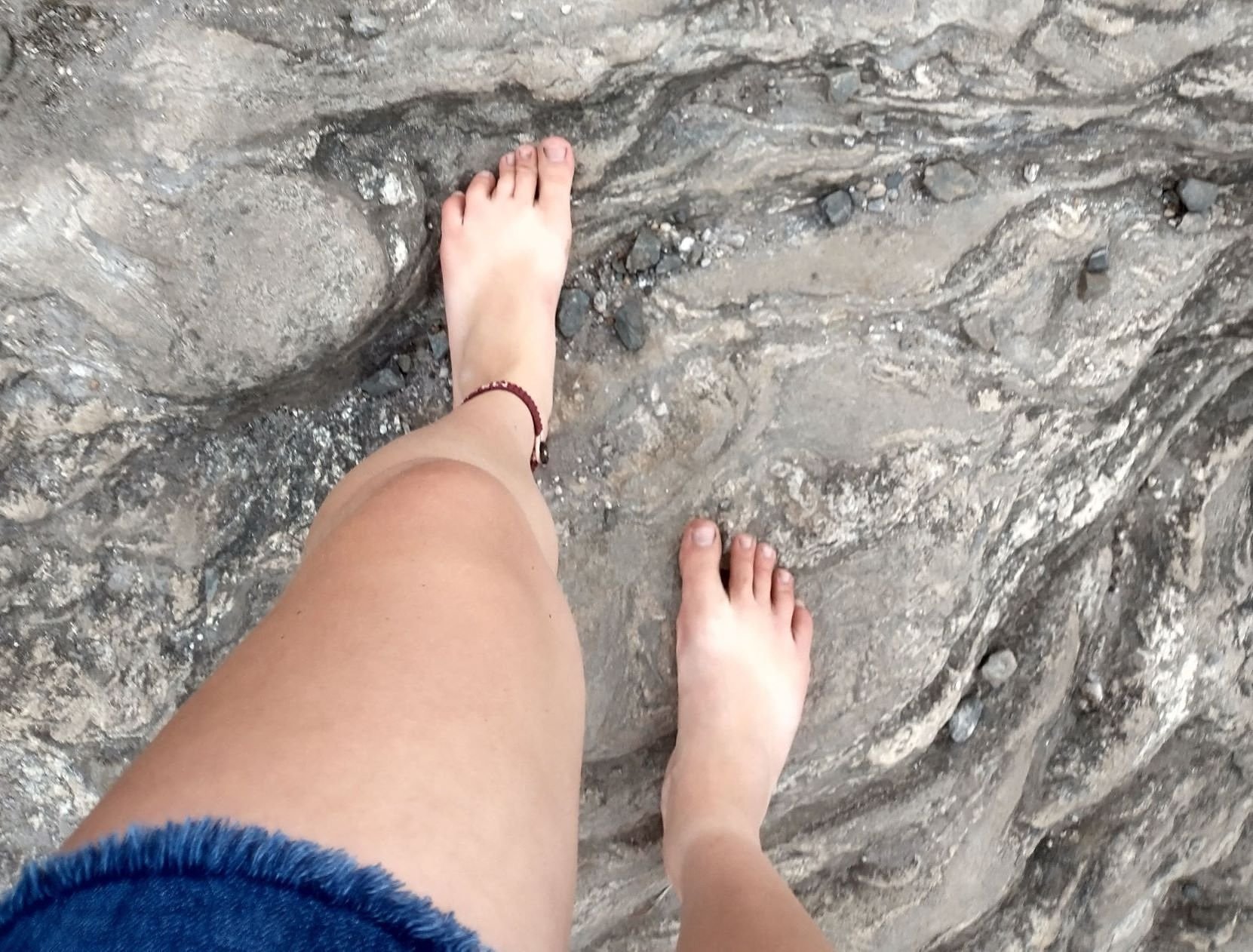Barefoot Training: Pros, Cons, and How to Get Started
The modern fitness industry often presents a paradox. We obsess over high-tech workout gear and meticulously crafted shoes designed to enhance performance, yet simultaneously, a growing movement urges us to ditch those shoes altogether.
Barefoot training, with its emphasis on working out with our feet in their most natural state, promises everything from strength gains to injury prevention. But does it live up to the hype? Let's examine the supposed pros, the very real cons, and provide a practical guide for anyone intrigued by the barefoot fitness revolution.
Potential Benefits of Barefoot Training
Advocates of barefoot training point to a multitude of benefits for both athletes and casual fitness enthusiasts:
Enhanced Proprioception: Our feet are incredibly complex structures, packed with an estimated 200,000 nerve endings. Modern shoes, with their cushioned soles and arch support, essentially insulate our feet from the environment. Barefoot training reignites those nerve endings, providing our brain with more accurate feedback on terrain, balance, and body position. This improved awareness, or proprioception, can translate to greater control and stability in our movements.
Foot and Ankle Strength: Like muscles elsewhere in our bodies, the small muscles and tendons within our feet and ankles need regular exercise to stay strong and functional. Modern footwear often acts as a crutch, supporting our arches and taking over the work those muscles should be doing. Going barefoot forces these muscles to engage, potentially building strength and preventing issues like rolled ankles.
Natural Running Form: Some proponents argue that traditional running shoes, especially those with thickly cushioned heels, encourage an unnatural 'heel strike' running style. This forceful landing can send shockwaves up the legs, contributing to injuries. Barefoot running advocates claim ditching the shoes promotes a gentler midfoot or forefoot strike, potentially mitigating injury risk.
A Deeper Connection to Movement: Beyond the physical benefits, there’s a philosophical side to barefoot training. It forces us to become acutely aware of our bodies in motion. There’s a sense of grounding, a direct connection with the earth beneath our feet that cushioned shoes can buffer. For some, this leads to a more mindful approach to workouts.
The Counter Arguments: Risks and Considerations
Before tossing those gym shoes aside, it's essential to be aware of the potential drawbacks and limitations of barefoot training:
Increased Injury Risk: While barefoot advocates suggest some injuries might be prevented, there's also a risk of other, unique injuries when suddenly transitioning to barefoot exercise. Our feet have grown accustomed to support. Suddenly demanding they do all the work unsupervised can lead to overuse injuries like plantar fasciitis or stress fractures.
Unsuitable Environments: Let's face it: most gyms, sidewalks, and even parks aren't designed for bare feet. Glass, sharp rocks, and uneven surfaces pose real dangers. Barefoot training should be approached with common sense, seeking out safe environments as much as possible.
Not for Everyone: Certain medical conditions, such as diabetes or foot deformities, can make barefoot exercise inadvisable. It's always crucial to consult a medical professional before making drastic changes to your workout routine, especially if you have underlying health concerns.
The Science Isn't Settled: While proponents of barefoot training present persuasive arguments, it's vital to recognize that definitive scientific evidence is still evolving. Some studies support the claimed benefits, while others show little difference between exercising in shoes and barefoot. More large-scale, long-term research is needed for a complete picture.
Getting Started with Barefoot Training: A Gradual Approach
If the potential benefits outweigh the risks for your situation, here's a safe and practical way to dip a toe into barefoot fitness:
Start Slow and Short: Your feet and ankles won't magically transform overnight. Begin with short barefoot sessions, maybe just 5-10 minutes at first, and gradually increase the duration over several weeks or even months.
Choose Your Terrain Wisely: Begin in forgiving environments like your own home, a grassy field, or a beach with clean sand. Avoid concrete, paved trails with debris, or anywhere with hidden dangers.
Focus on Form: Listen to your body! If something starts to feel painful, stop immediately. Seek out resources and possibly coaching on proper barefoot running and exercise technique to minimize the risk of injury.
Warm Up and Cool Down: Pay extra attention to warming up muscles and mobilizing your feet and ankles before any barefoot activity. Similarly, make time to gently stretch those hardworking feet afterwards.
Start with Low Impact: Walking, simple bodyweight exercises, and gentle yoga are great places to begin. Save high-impact activities like running for when your feet have sufficiently adapted.
Transitional Footwear: Minimalist Shoes
For many, fully-fledged barefoot training isn't the goal. Instead, there's middle ground to explore – minimalist footwear. These 'barefoot shoes' come in various styles, but they share some key traits:
Thin, Flexible Soles: Minimalist shoes allow your feet to move more naturally, with soles thin enough to let you feel the terrain without being totally unprotected.
Zero (or Minimal) Heel Drop: Unlike most traditional athletic shoes, minimalist models don't elevate the heel. This encourages a more neutral foot position and potentially a gentler running stride.
Wide Toe Box: Our toes need space to work properly. Minimalist shoes often have a wider toe box, allowing for proper splay and reducing the risk of foot deformities.
If you're intrigued by the idea of barefoot training but hesitant to go completely unshod, minimalist footwear can be a fantastic stepping stone (pun intended!).
Expanding Your Barefoot Horizons
We often box ourselves into thinking barefoot training must look like traditional workouts done sans sneakers. Here's where things get interesting:
Barefoot Hiking: Where better to connect with nature than on a wilderness trail? Barefoot-friendly hikes with soft terrain offer an incredible sensory experience and a serious workout for your feet.
Earthing/ Grounding: Supporters of this practice believe that direct contact with the Earth's surface can reduce inflammation, improve sleep, and generally enhance well-being. Whether it's walking barefoot on the beach or simply sitting with feet on the grass, it adds another intriguing element to the barefoot experience.
Barefoot-Inspired Sports: Many activities like yoga, Pilates, dance, and certain martial arts are traditionally practiced barefoot. If you already enjoy any of these, you've got a head start in understanding the benefits of ditching the shoes.
Final Thoughts
Barefoot training isn't about ditching shoes forever. Instead, it's about embracing an overlooked tool we all possess – our own two feet. Science may still be debating the finer points, but there's no doubt that reconnecting with the ground beneath us has the potential to be transformative.
Whether you're a seasoned athlete keen to gain an edge or simply want to add a new dimension to your fitness practice, the world of barefoot movement has something to offer. The key lies in approaching it carefully, listening to your body, and having fun rediscovering the simple power of putting one foot in front of the other – just as nature intended.
Important Considerations
Hygiene and Safety: If exploring barefoot activities outdoors, it's crucial to take precautions. Inspect the area for hazards, be mindful of extreme temperatures, and wash your feet thoroughly afterwards.
Individual Variation: What works well for one person might not be suitable for another. Listen to your body, respect any pain signals, and be patient. Barefoot fitness is a journey, not a race.






